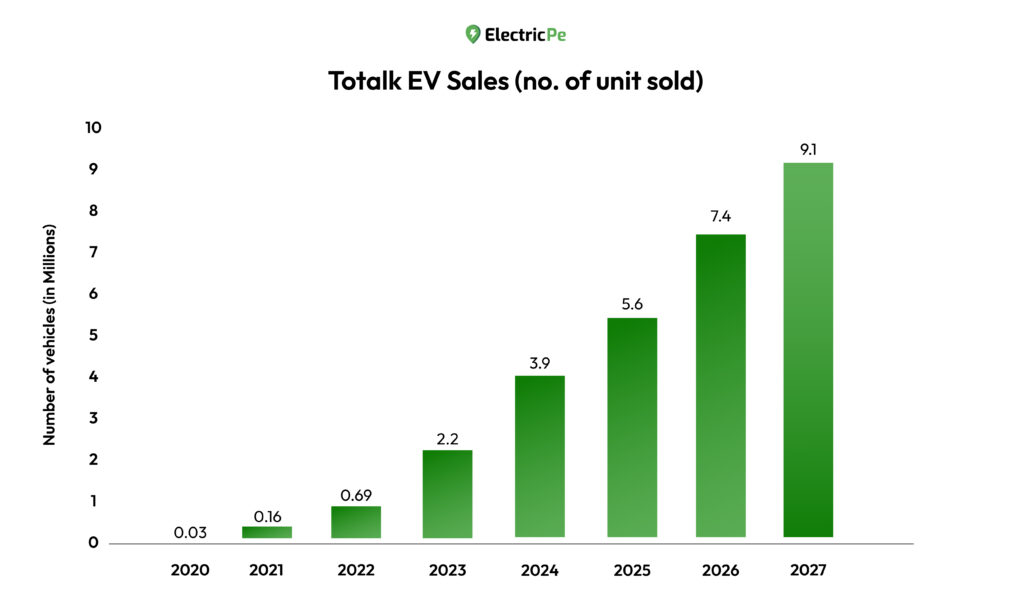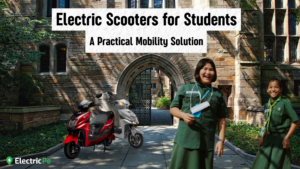India is the third largest energy-consuming country and is taking significant measures to achieve a net-zero carbon goal by 2070. Sustainable development and practices are at the centre of this journey. After being significantly dominated by fossil fuels for a century, India is now transforming into electric mobility. By adopting alternative fuels, new energy sources, and electrification, the country is creating a cleaner, more sustainable future.
Evolution of Electric Vehicles- Early Concepts of EVs
Electric vehicles were first introduced back in the 19th century by inventors such as Thomas Davenport and Robert Anderson. These people were pioneers in developing electric-powered carriages. In the U.S., the first successful electric car debuted around 1890, thanks to William Morrison, a chemist who lived in Des Moines, Iowa. His six-passenger vehicle, capable of a top speed of 14 miles per hour, was little more than an electrified wagon, but it helped spark interest in electric vehicles. However, their developed models faced many limitations, such as battery technology and range anxiety.
Revival in the 21st Century
During the 21st century, EVs were revived through advancements in battery technology, government involvement, and environmental concerns. Tesla played an essential role by popularising EVs and producing high-performance electric vehicles that competed with gasoline ones.
Electric Vehicles Presently
| ADVANTAGES | CHALLENGES |
| Reduced fuel cost | Initial upfront cost |
| Environmental Benefits | Range Anxiety |
| Quiet & Smooth Operation | Financing |
Presently, EV adoption is rapidly increasing due to technological advancements, public awareness, and government support. People are shifting from fossil fuel dependence to electric mobility. Here are a few factors that have accelerated the shift from fossil fuel vehicles to EVs:

Advancement of Electric Vehicles:
Government Incentives- Governments are now offering incentives and benefits to accelerate the adoption of EVs. These incentives include rebates, tax credits, reduced registration fees, and many more alternatives. These incentives make EVs look more attractive to users and potential buyers.
Technological Advancements- EVs have witnessed drastic advancements in battery technologies, charging speed, energy density, etc. Ongoing research and other innovative technologies offer scope for significant improvements and breakthroughs, enhancing the overall performance of EVs.
Expanding Charging Infrastructure- The charging infrastructure availability is critical in adopting electric mobility. Governments, private sectors, and businesses are investing hugely in such areas. Fast charging stations are being installed at places for better efficiency and convenience for EV owners.
Consumer Benefits- EVs offer many consumer benefits apart from environmental benefits. Although the upfront cost is slightly higher in some cases, the long-term benefits and costs are significantly less. The maintenance costs are lower; these vehicles are smooth in operation, and there is the joy of driving without causing air pollution.
Environmental Impact- EVs produce zero tailpipe emissions reducing air pollution and greenhouse gas emissions, contributing to a cleaner and healthier environment. The shift towards EVs is one of the very crucial steps in achieving global sustainability goals.
Bottom Line:
Finally, it should be noted that technological improvements and rising consumer acceptability mark the current state of EVs. The EV revolution is underway and ready to change how we drive and shape a more sustainable future, primarily through government support, industry assurances, and expanded charging infrastructure.
Sources: CII, Energy.gov





